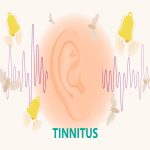
Top 15 Bathroom Safety Tips for Toddlers
6 min readWritten by Editorial Team


To see your little one walk around the house is a wonderful sight, but you cannot ignore the fact that your baby is now more prone to falling and bumping into things. Toddlers can get a hit handful at times so it is better that you keep your child’s surroundings a little more child-friendly. In this aspect, it is important to know bathroom safety tips for toddlers.
Among the list of precautions you need to take when your baby starts walking is to baby-proof your house, especially the kitchen, bathroom, and toilets since these are the places where most accidents occur. You can read more about childproofing your house here.
A bathroom is a place that your baby is going to spend a good amount of time in on a regular basis. So here are the top 15 bathroom safety tips for toddlers that you need to be aware of.
Top 15 Bathroom Safety Tips for Toddlers
Listed below are some pointers that will help you to prep your bathroom for your toddler.
1. Redoing the Hardware
Bathrooms and toilets are particularly dangerous zones for your toddlers. Make sure your bathroom door has a sturdy latch that your toddler can’t open. The best thing to do is to fix the latch at a height your child is unable to reach. Also, make certain that the taps and faucets are at a good height.
Kids can get quite hyperactive and playful in the bathroom and hurt their heads by bumping into things. Taps and faucets are made of metal and can give your baby serious injury. Hence make sure that they are way above your baby’s height.
2. Padding and Baby-Proofing
Toddlers very frequently bump into things and even keep tripping. To avoid accidents, make sure you cover sharp edges in your bathroom. There is a lot of padding and babyproofing material available in the market to cover and conceal the rough and sharp edges of the bathroom.
You could even stick a thin layer of sponge to objects that are sharp and could hurt the baby. Painting rough edges to smooth them out will also help to keep your kid safe.
3. Keep Gadgets/ Electronics Out of Reach
Needless to say, electronic items like razors and dryers can be extremely hazardous if you have a baby in the house. Sometimes we tend to leave our gadgets unattended, especially in the bathroom. Make sure that all your electronic gadgets like electric razors, epilators, blow dryers, hair straighteners and curlers are unplugged and way beyond your baby’s reach.
If you store them in the bathroom, have a separate cabinet for these things, which is difficult for your child to open. Also, make a habit to put these things away immediately after use.

4. Keep Chemicals and Detergents Away
Toddlers are curious little creatures. They want to touch every single thing they see. Hence, detergents and cleaning agents must be kept on a higher shelf in the bathroom. If the child accidentally touches, licks or swallows cleaning agents or other toiletries, it can be extremely dangerous. Also, make sure you securely close the lid of these products and not leave them open.
5. Safety Accessories to Baby-Proof Bathroom
To make things easier for new parents, there are a lot of products available in the market such as:
Faucet extenders help the child reach the running water easily.
- Adhesive stickers, when stuck on the bathroom floor, give a good grip to the feet and avoid slipping accidents.
- Portable handles can be stuck on the bathroom walls so that the baby or the mother can hold on to them while getting off the floor.
- Non-slip mattresses provide good grip even when there is water on the floor.
- A toilet seat lock is a child lock system that you put on the toilet seat so that your baby won’t be able to open it. Some locks even close the seat automatically when left open.
- A water thermometer helps you to check the water temperature and determine whether the water in the tub or the bucket is suitable for the baby to bathe with.
- If you have a bathtub, investing in some baby floats, rings and floating cushions is a wise decision.
6. Check the Water Temperature
Your toddler has extra sensitive skin, hence you need to be careful about the water temperature before giving them a bath. The bathing water must not be more than 120 Degrees Fahrenheit (48 Degree Celsius). If the water is hotter than the given temperature, it could burn their skin.
Make sure you test the water at the back of your hand before pouring it. Also, do not use extremely cold water while bathing your toddler as it can give them cough and cold. Lukewarm water is the most appropriate.
7. Use Good Quality and Gentle Products
When it comes to your toddler’s safety, the products you use play a major role. Make sure you use extremely gentle and chemical-free products. These include shampoos, soaps, powder, lotions, and creams as well.
Opt for chemical and paraben-free products that won’t harm your child. You can also opt for homemade soaps and natural organic products; these are easily available as well.

8. Things to Avoid
There are certain things you must avoid installing in your bathroom if you have a toddler. If you don’t have a bathtub and are thinking of installing one, now is not the time! Bathtubs cause many accidents since they store water and have a slippery surface.
Also soaking in soapy water for a long duration can give your toddler an infection. Take off the shower curtain if you have one since kids tend to get entangled in the curtain and it could also cause suffocation. Vinyl shower curtains release chemicals in the air that could harm your little one.
9. Things to Teach Your Child
Even after taking several precautions, it is essential that you teach your toddler certain things like running in the bathroom is a strict no-no. Make them understand that touching the toilet seat and shoving hands in the pot is a very bad habit since a toilet pot has a lot of germs.
Restrict your child from touching your gadgets even if they are unplugged. Also teach your child how to turn off the faucet in case the water is overflowing and spills on the floor. A child must also be taught to stay seated during the entire process, be it bathing or potty training.
10. Give Your Baby Full Attention
When you are in the bathroom with your toddler you have to be extra attentive. With slippery floors, water and metal faucets in the bathroom, your kid needs your undivided attention. You can make this a baby-mom bonding time, if you wish.
11. Use Rubber Bumpers on Sharp Counter Corners
The countertops in the bathroom usually have sharp corners. This is very dangerous for your toddler who runs around and falls every 5 minutes. Installing rubber bumpers on the sharp counter corner prevents the toddler from hitting and cutting their head on these sharp corners.
12. Install Anti-scalding Devices to Baby-Proof the Bathroom
Install an anti-scalding device on the taps. This device automatically turns off the water if the temperature rises too high. You may discover a variety of anti-scalding gadgets in the market, which reduce the possibility of scalding.
13. Install Lockers on Trash Bins to Make Bathroom Baby-Proof
If you already have a trash bin in your bathroom, install trash cans locks. Alternatively, if you want to buy one, look for trash cans that have a pre-installed lock. Toddlers tend to look into garbage cans. They can cut themselves if they come into touch with disposable razors. They may also stumble across potentially toxic goods that have been thrown away in the trash.
14. Remove the Shaving Mirror From the Shower
If you have an in-shower shaving mirror, take it away or place it out of the reach of a toddler while they are in the tub. The mirror can accidentally shatter and the sharp blades might injure them.
15.Purchase Rubber Guards for Tub Spouts
The spout is usually harmless, but anyone who bathes a child knows that a toddler can be very excited when playing in the bathtub. A rubber spout cover helps to prevent the toddler from accidentally hitting on the spout and injuring their head.
There are many ways for your child to use the bathroom more safely, including dealing with the risk of burns, slips, cuts, and electric shock. Try some of the changes listed above and take care of your child’s safety in the bathroom.

Editorial Team,
With a rich experience in pregnancy and parenting, our team of experts create insightful, well-curated, and easy-to-read content for our to-be-parents and parents at all stages of parenting.Read more.
Responses (0)
Want curated content sharply tailored for your exact stage of parenting?
Related articles

Top 10 Animal Activities and Games For Toddlers to Teach About Animals

8 Stylish Trendy Toddler Boy Haircuts

Top 12 Preschool in Bangalore For 2024-2025

Tinnitus in Toddlers – What is it and Top Causes

Top 10 Language Activities For Toddlers to Boost Language Development

Top Healthy Breakfast Ideas For Toddlers(12 to 24 Months)
Sponsored content
Discover great local businesses around you for your kids.
Get regular updates, great recommendations and other right stuff at the right time.





